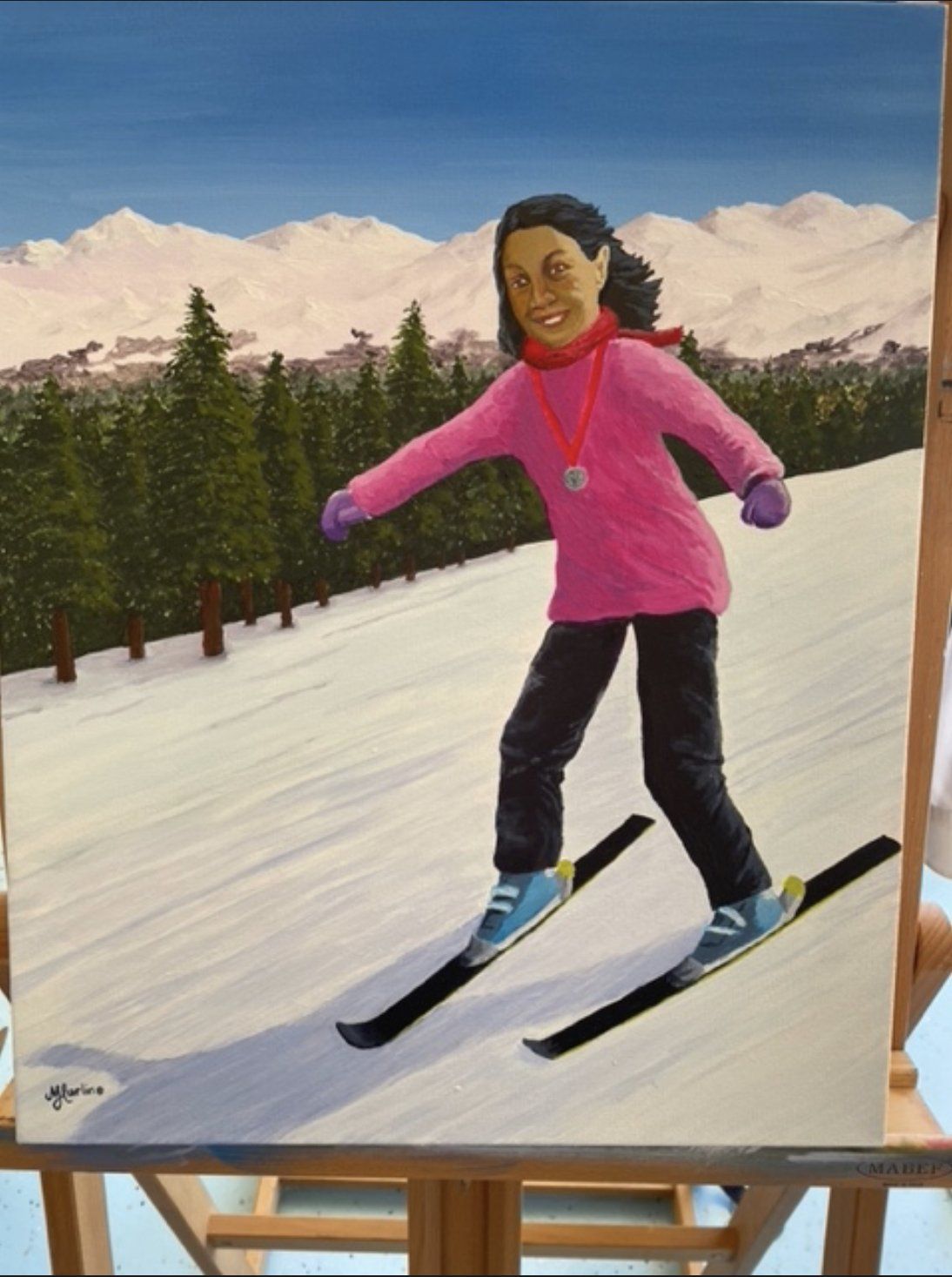Imagine sliding down a hill of snow, feeling the wind on your face, surrounded by snowy mountain tops and trees and the people that love you. At one time in her young life, Harper might never have expected to be able to do any of this. But nothing can hold Harper back.
As a baby, it took Harper some time before she was able to do many of the things that other babies could do. But her doctor reminded mom and dad that they should focus on the things that Harper could do, and to encourage her, and build on those capabilities. Harper could blow kisses, play peek-a-boo, smile, and hug.
At eleven months she started crawling. She was fitted with orthotic braces to help strengthen her ankles and legs. This helped her to be able to walk when she was around a year and a half old. She learned how to pull on her socks and dress herself. Because she is non-verbal, learning how to communicate with Harper was harder, but Harper, mom, and dad worked hard to learn how to communicate with each other.
When she was five years old, Harper reached a turning point. She was diagnosed as one of only 200 in the world with Okur-Chung Neurodevelopmental Syndrome (OCNDS). In addition to OCNDS, she is also on the autism spectrum. She learned to communicate with the aid of an electronic device, along with sign language and gestures.
About this same time, she was able to take the orthotic braces off and it seemed a whole new world opened up to her. She gained strength and improved her abilities. She is a very active girl that loves to dance, swim, and hike. Harper then began to learn to snow ski. She took adaptive ski lessons while tethered to her instructors. At the age of ten, she had the courage to ski all by herself. Her moment in the spotlight came in the Colorado Special Olympics ski team where she won second place for her age group.
Harper has been in school since Pre-K, and will soon be in sixth grade. She doesn’t seem to be aware of her challenges. She is who she is, and she can actually do a lot. She does not hesitate to do the things that her peers do. She has learned a lot, and is teaching others about courage, persistence, and breaking barriers. And she has an infectious smile that brings cheer and happiness to everyone she meets.
At ten years old, Harper still has a life full of adventure ahead of her. She will continue to ski, hike, dance, swim, and enjoy being in the mountains and among the tall trees.

